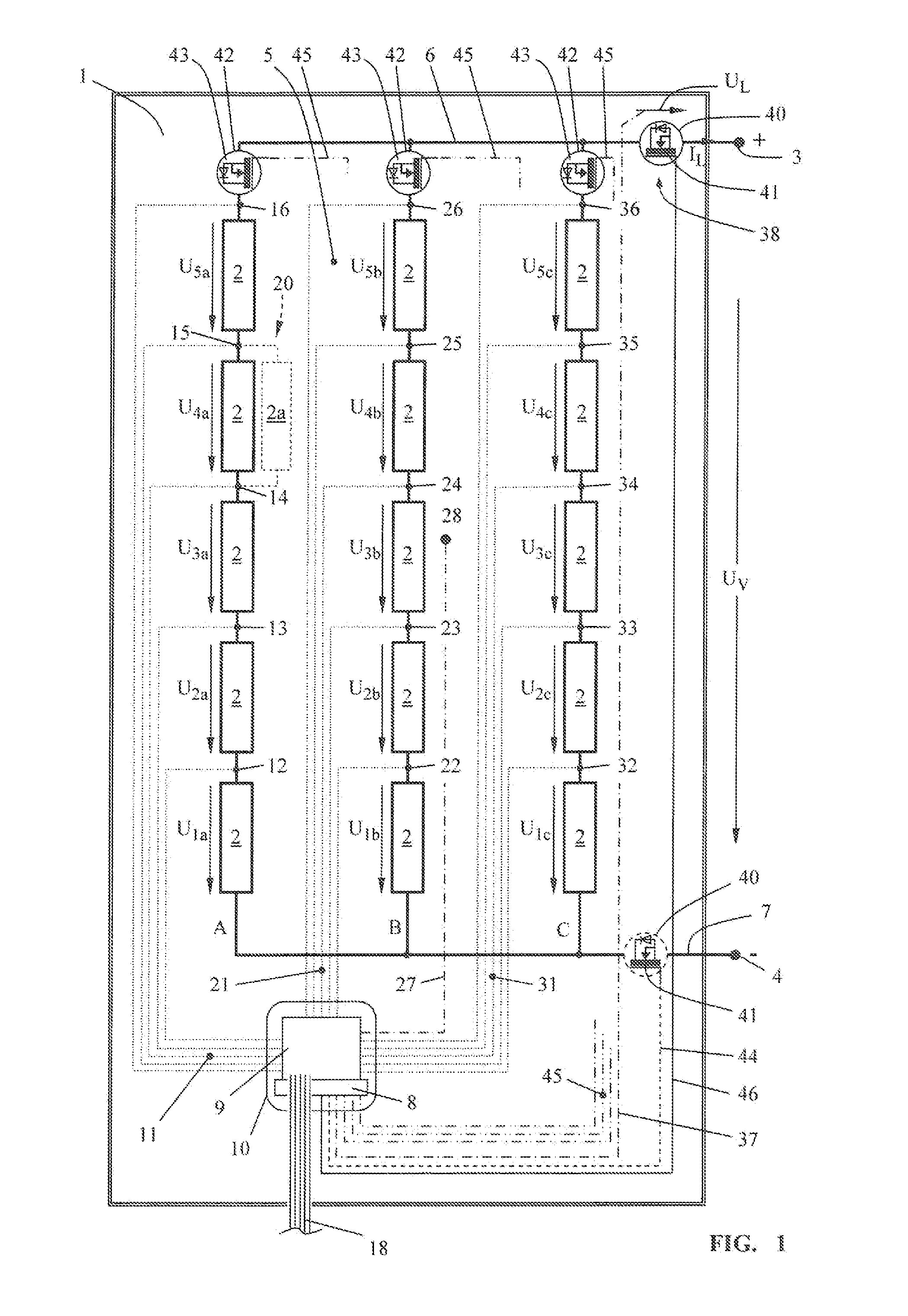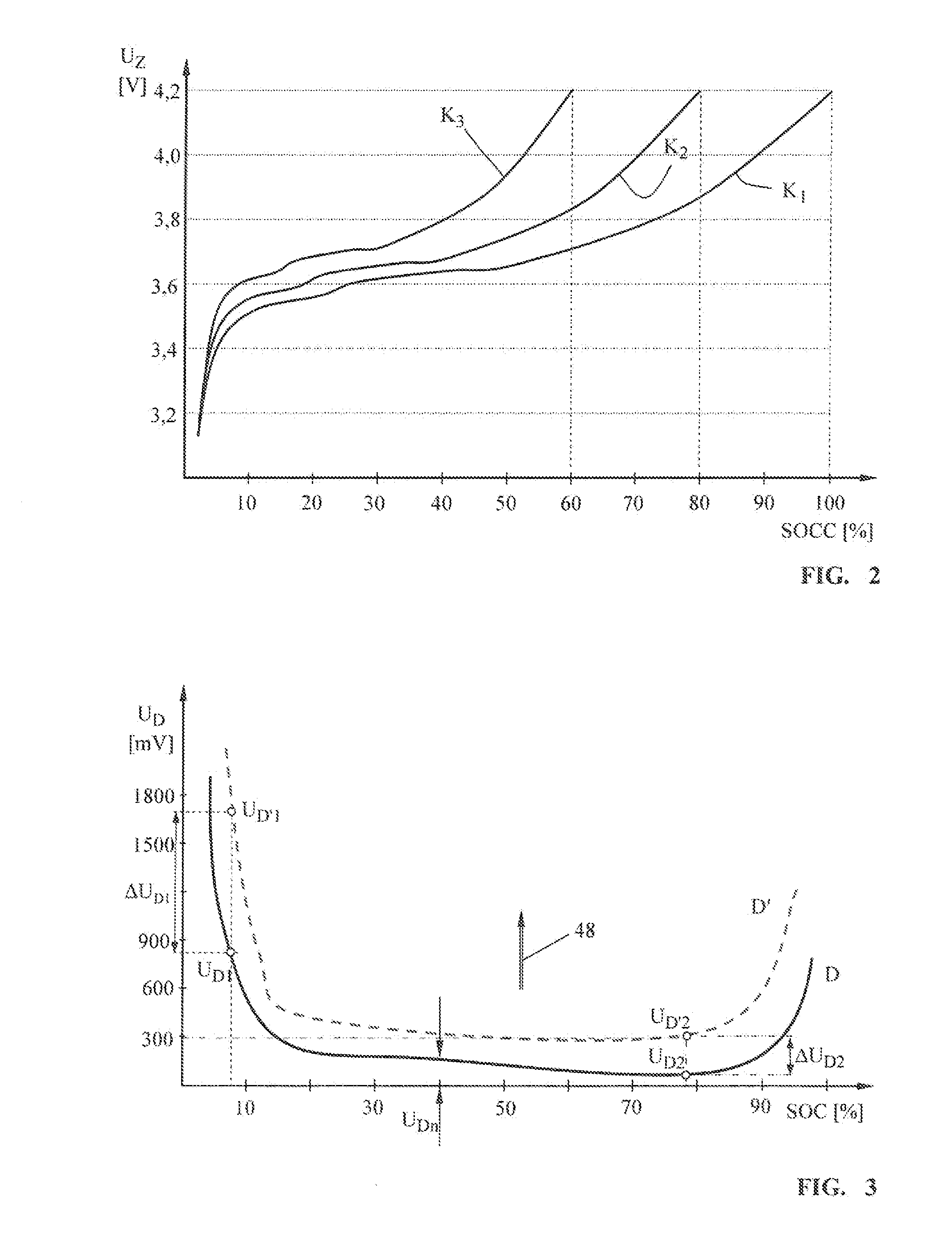Protective circuit for a rechargeable battery pack
protection circuit technology, applied in safety/protection circuits, electrochemical generators, instruments, etc., can solve the problems of inability to identify the incipient failure of an individual cell already in the new state of a rechargeable battery pack, and achieve the effect of avoiding consequential damag
- Summary
- Abstract
- Description
- Claims
- Application Information
AI Technical Summary
Benefits of technology
Problems solved by technology
Method used
Image
Examples
Embodiment Construction
[0030]The rechargeable battery pack 1 illustrated in FIG. 1 consists of three cell series A, B and C, wherein in each cell series A, B and C five individual cells 2 are situated one behind another in series connection. Each individual cell 2 of each cell series A, B and C has a cell voltage U1a to U5a, U1b to U5b and U1c to U5c. In the embodiment shown, the cell series are situated in parallel connection at the poles (3, 4), between which the supply voltage Uv of rechargeable battery pack 1 is tapped off. Advantageously, the individual cells 2 are cells based chemically on lithium, for example, lithium-ion cells, lithium-polymer cells, lithium-iron cells or the like. The embodiment is based on a cell voltage of approximately 4.2 volts at full charge (FIG. 2), such that the maximum supply voltage UV is approximately 20 volts.
[0031]Instead of an individual cell 2, a cell block 20 can also be provided, as is indicated by dashed lines at the top left in FIG. 1. A cell block 20 can be co...
PUM
 Login to View More
Login to View More Abstract
Description
Claims
Application Information
 Login to View More
Login to View More - R&D
- Intellectual Property
- Life Sciences
- Materials
- Tech Scout
- Unparalleled Data Quality
- Higher Quality Content
- 60% Fewer Hallucinations
Browse by: Latest US Patents, China's latest patents, Technical Efficacy Thesaurus, Application Domain, Technology Topic, Popular Technical Reports.
© 2025 PatSnap. All rights reserved.Legal|Privacy policy|Modern Slavery Act Transparency Statement|Sitemap|About US| Contact US: help@patsnap.com



